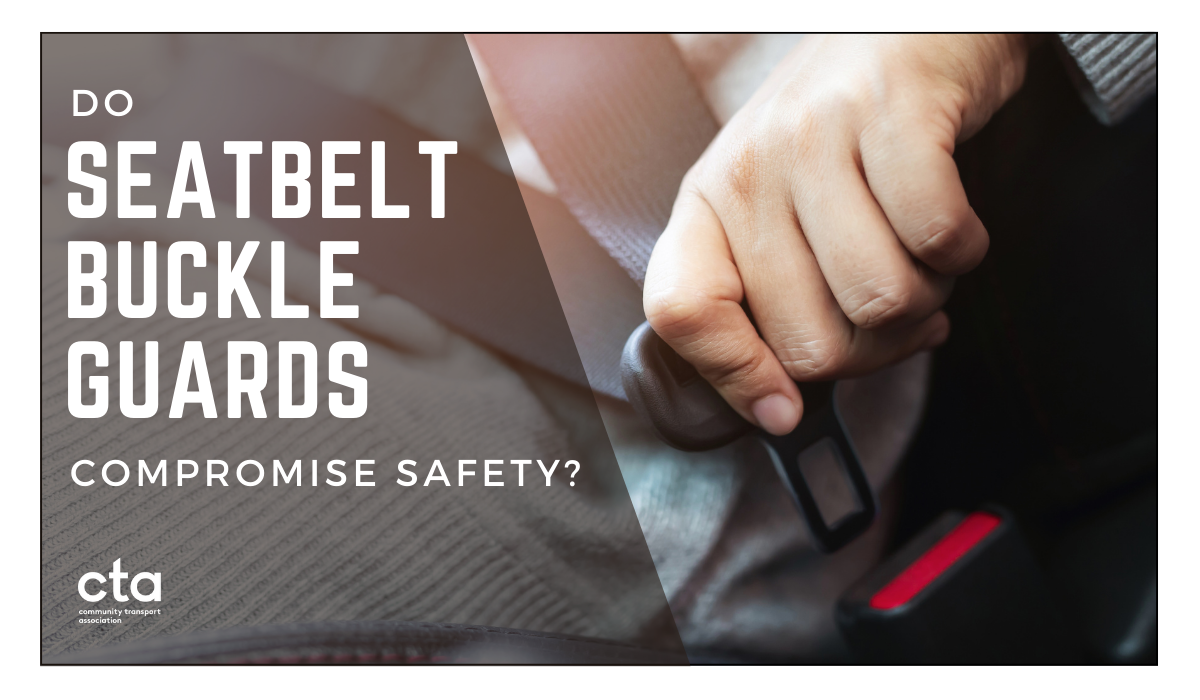-

Do seatbelt buckle guards compromise safety?
-
2nd March 2023
-
On 13th February, we were notified by several CTA members of an article published in Route One magazine, containing a briefing from DVSA around the use of seatbelt ‘buckle guards’: https://www.route-one.net/news/seatbelt-buckle-guards-must-not-be-used-dvsa-warns/
The article stated that ‘DVSA has highlighted to operators of coaches, buses and minibuses used to carry children that they must not fit seatbelt buckle guards.
The Agency says that such guards “are often used on school or local authority transport,” but adds that use of them contravenes the Road Vehicle (Construction and Use) Regulations 1986.’ When we sought further clarification from DVSA’s technical team, we were told ‘enforcement action would be taken by the DVSA if seat belt buckle guards were found to be in use during a vehicle inspection’.
Neither the DfT or the DVSA had been in touch with CTA regarding this briefing, and we are still seeking clarification on when it was originally issued, and what prompted it. CTA and a number of our partners have been in touch with DfT and the DVSA to seek clarification, due to the potential impact on passengers and their ability to make essential journeys.
As many of our member organisations routinely transport children with special educational needs, adults with dementia, and adults with learning disabilities, buckle guards have been one of the tools used by the sector (in a small number of cases) to ensure passengers can be transported safely and securely, with risk management protocols in place, e.g. a Passenger Assistant/Escort riding alongside the passengers.
CTA recognises that the regulations state anything that modifies the seatbelt or prevents easy access to the buckle should not be used and could be subject to enforcement action. Our advice to operators would be to avoid the use of any tools, guards, or restraints which do not comply with these regulations. We are aware however, that in a small number of cases operators have chosen to use buckle guards as one of a series of control measures to ensure that passengers are not prevented from travelling altogether, leaving them isolated and unable to access vital provision.
We know that operators are only implementing tools like buckle guards when other safeguards have failed, and the passenger is repeatedly putting themselves and others at risk by removing their seatbelt while the vehicle is in motion. While we would strongly recommend that operators comply with the regulations and use alternative measures such as disabled people’s seatbelts, we understand that this can be a challenge for some organisations to implement. We shared with colleagues at the DVSA and DfT the risk that if blanket enforcement action were to be taken against operators using buckle guards, this could put a significant number of passengers at risk of being unable to travel, including preventing children from attending school.
A further briefing was issued on 17th February where the DVSA position seems to have changed: https://content.govdelivery.com/accounts/UKDVSA/bulletins/3496836
Where the initial briefing and further clarification from DVSA seemed to indicate that enforcement action would be taken against any operator using buckle guards in any circumstances, this update states: ‘At this stage, DVSA is highlighting the potential safety issues with the use of seatbelt buckle guards.
If DVSA examiners find evidence of the use of seatbelt buckle guards during routine roadside inspections, their first action would be to offer advice and guidance about vehicle and passenger safety.
DVSA wants to work with industry to develop a solution to support the safe transport of PSV users: it has no plans to target enforcement action against their use.’
CTA welcomes this update and clarification from the DVSA, and we look forward to working with colleagues to identify a clear way forward for the sector to continue to provide accessible and inclusive transport in a safe and legal way. We remain committed to developing pathways to support DfT and DVSA to engage and communicate with the CT sector in a more timely, transparent way going forward.
Risk Management
When transporting passengers with additional support needs, it is essential that a comprehensive risk assessment is carried out and appropriate control measures are put in place. Tools like disabled people’s seatbelts or other measures must only be introduced as needed following the risk assessment process, in order to preserve passengers’ safety, liberty, and dignity.
If operators are seeking to move away from the use of buckle guards, it will be important to revisit your risk management protocols and conduct an updated risk assessment to identify the most appropriate alternatives. This needs to be completed with the passenger (where possible) and with support from their carers, parents, and/or occupational therapist if appropriate. Whilst the term ‘seat belt’, how they are attached and how they are used is laid down quite strictly in the legislation, a ‘disabled person’s belt’ is identified as an alternative to a seat belt but its design and how it is used is not defined in detail. CTA recommends getting in touch with your vehicle supplier and/or a reputable supplier with a strong reputation for delivering the highest possible standards of passenger safety for advice, e.g. Crelling. Remember, each passenger is different and their needs will vary – support will need to vary to meet their specific needs and help them to travel safely and securely.
-
-
- About CTA
- /
- CTA Membership
- /
- CTWeek24
- /
- Policy & Research
- CommunitySolutions: A Manifesto for the Next UK General Election
- Our Campaigning Guide for Community Transport
- Our Policy Work
- Join Our Mapping England Passenger Survey
- Aneurin Bevan Transport to Health
- Climate Action in Scotland
- conneCTing England Programme
- Mapping Scotland Project
- Mapping Wales
- Mapping England
- Tackling Loneliness in England
- Healthy Communities in Scotland
- /
- Advice & Support
- /
- Training
- /
- Events
- /